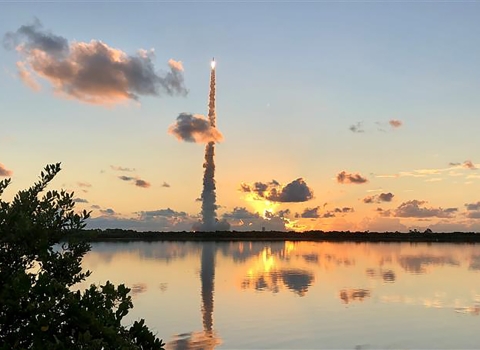The Service, in partnership with the five states bordering the northern Gulf of Mexico, NOAA, the U.S. Environmental Protection Agency, and the U.S. Department of Agriculture, has produced a database on colonial nesting birds that contains information gained from tens of thousands of aerial photographs taken during the decade following the 2010 Deepwater Horizon oil spill. All information included in the database is available to the public, including the original high-resolution photographs.
The Deepwater Horizon explosion resulted in the largest marine oil spill in United States history. It discharged more than a million gallons of oil into the Gulf of Mexico. For wildlife in the Gulf of Mexico and along its coast, the oil spill was an unprecedented ecological disaster. In the wake of the spill and subsequent legal settlements, federal and state agencies were tasked with assessing and restoring damage to natural resources such as wetlands and wildlife.
For the Service, a significant part of that work involved analyzing and quantifying injuries to bird habitats and populations along the northern Gulf of Mexico, not only on federal lands, such as national parks, national seashores, and national wildlife refuges, but also in other areas that support bird populations.
Birds that nest in colonies along the coast were hard hit by the spill. Direct oiling of nests, young, and adults was one problem. Damage to and death of the vegetation they use for nesting, such as mangroves and marsh grasses, was another.
Restoration efforts began with documenting existing colonial waterbird bird nesting habitat. Having this information is enabling biologists to better locate and design bird nesting habitat restoration projects and assess the effectiveness of newly restored habitats.
For the survey, 49,000 high resolution photographs were taken in which birds were identified and counted. Their nests were also counted. The data was entered into a database that includes a range of information from the detailed to basic descriptive summaries of the most commonly seen species.
The database has already allowed us to look at the change in the number of nests over time. It appears that the number of nests for many species, such as brown pelicans, increased significantly in 2021. This portal is an easy-to-use web-based search engine that allows researchers, restoration managers, and the public to search by year, region, state, colony, species, and watershed to provide results on total birds or total nests.
“We recognize the many benefits of making this user-friendly database available to managers, scientists, and interested members of the public,” says Service biologist Dave Hewitt. “This expansive data set has the potential for creating a higher level of awareness of the challenges faced by these birds, and it can lead to better decisions by wildlife biologists, managers, and other stakeholders.”



